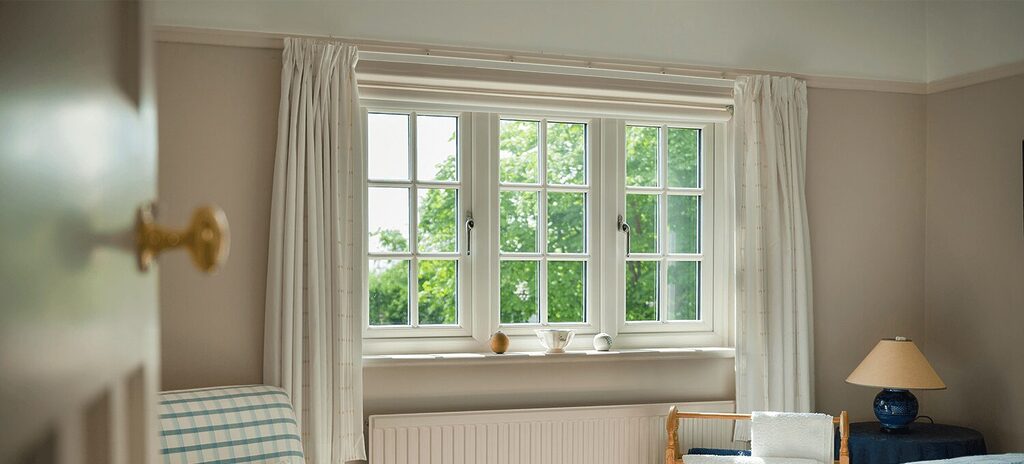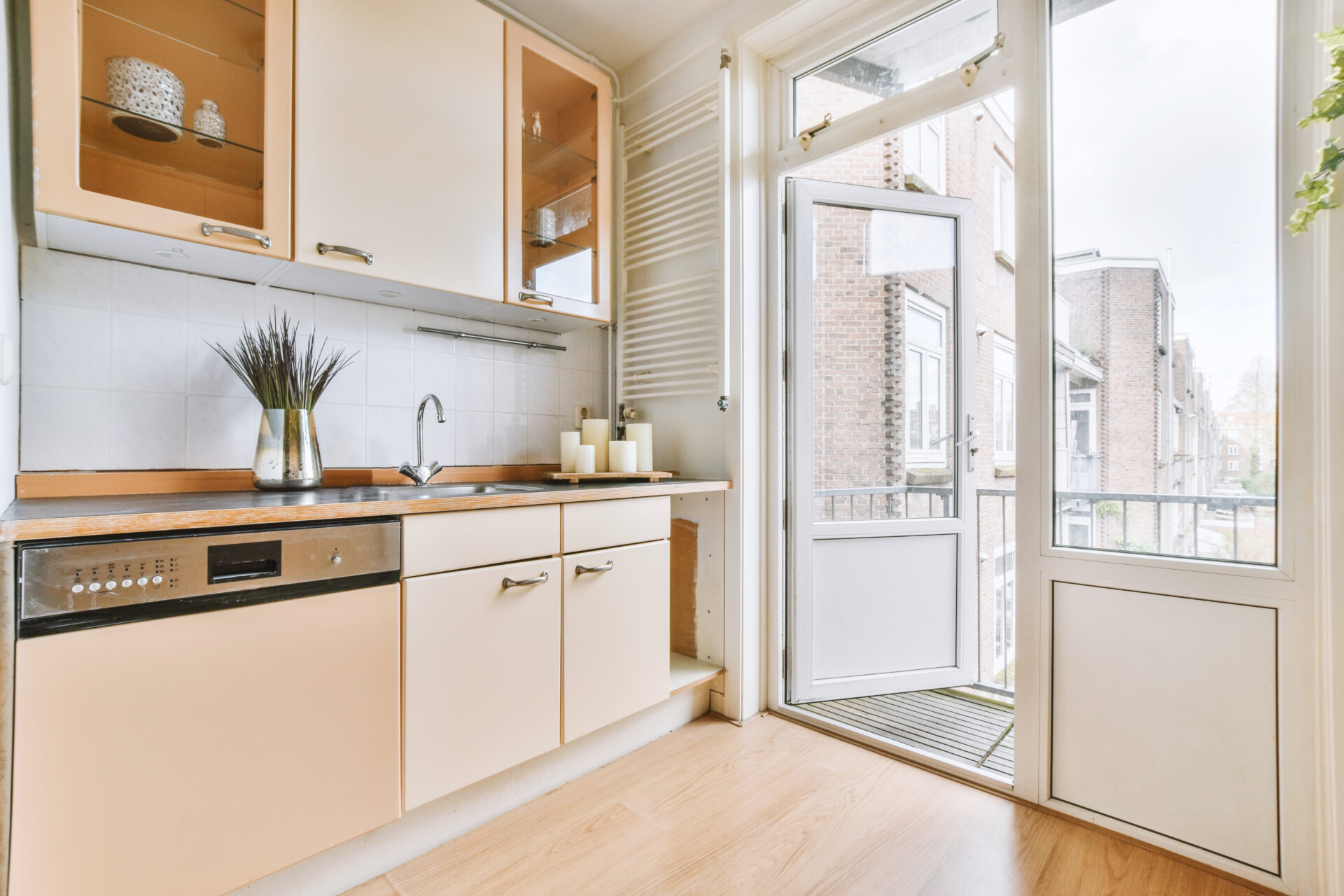Last Updated on 15 April 2025 by Tia Ellahi
uPVC Door: Are they secure?
Yes, a modern uPVC door offers good security, especially when fitted with multi-point locking systems, reinforced frames, and insurance-approved locks like anti-snap cylinders.
Still deciding if a uPVC door is right for your home? You’re not alone. With so many options on the market, it can be hard to know where to start.
In this guide, I’ll walk you through everything you need to know about uPVC doors – from benefits and prices to styles, finishes, and how they compare to alternatives.
What We’ll Cover
- What a uPVC door is and why they’re still a popular choice
- Different styles available for UK homes
- How they compare to other options like composite doors
- Best brands: Why Deceuninck stands out
- FAQs
What is a uPVC Door?
Let’s start simple: uPVC stands for unplasticised polyvinyl chloride – a strong, low-maintenance plastic that’s been used in UK homes for decades. A uPVC door is made primarily from this durable material, often reinforced with internal steel or aluminium, and typically includes a multi-point locking system.
uPVC entrance doors have long been a go-to for budget-conscious homeowners looking for a reliable, weather-resistant door that requires minimal upkeep. Whether you’re upgrading your uPVC back door, replacing an old timber door, or just looking for a low-fuss option, uPVC remains a staple in UK home improvement.
Why uPVC Doors Are Still Popular in 2025
Although composite and aluminium doors have surged in popularity, uPVC doors still hold their ground – and with good reason. They’re affordable, durable, and available in a wide range of styles. For homeowners prioritising price, low maintenance, and basic thermal performance, they’re hard to beat.
Modern uPVC doors are far better looking than the originals from 20 years ago. Improved uPVC door handles, glazing, and colour options make them a more attractive and viable option for many households, especially as a uPVC back door or utility entrance.
Types of uPVC Doors
From simple to statement, there are now more choices than ever. Here are the most common styles:
uPVC Front Doors
Typically solid, often with a small glazed panel. Best suited to homeowners looking for cost-effective kerb appeal.
uPVC Back Doors
A practical option with half-glazed or fully glazed designs, great for kitchens and side entrances.
uPVC French Doors
Perfect for opening onto gardens or patios. Slim profiles and large glazing panels make them ideal for letting in natural light.
uPVC Exterior Doors
Covers any external-facing door, including porch doors, garage side doors, and balcony access.
All these styles are available in a range of colours and glazing patterns – with improved seals and reinforced cores for better security.
Pros and Cons of uPVC Doors
Not sure if a uPVC door is right for you? Here’s a quick look at the pros and cons to help you decide:
Pros:
- Affordable: uPVC doors are one of the most cost-effective entrance door options on the market.
- Low Maintenance: No painting, staining, or sealing required. Just wipe clean occasionally to keep it looking fresh.
- Weather Resistant: Great at keeping wind and rain out, especially when properly sealed.
- Lightweight & Easy to Install: Makes them ideal for experienced DIYers or quicker fitting.
- Wide Range of Styles: Now available in more colours and finishes than ever before.

Cons:
- Less Insulating Than Composite: Not quite as thermally efficient or soundproof.
- Plastic Appearance: Even with modern finishes, uPVC still doesn’t have the premium look and feel of timber or composite.
- Limited Lifespan: While durable, they may show signs of wear sooner than higher-end options.
- Not Ideal for High-Security Needs: While secure, composite doors offer more advanced locking and strength features.
If budget, simplicity, and practicality are top priorities, uPVC could be just what you need. But if insulation, design flexibility, or added durability are key, you might want to explore other materials too.
How uPVC Compares to Composite Doors
One of the most common questions we get asked is: “Should I go for a uPVC door or a composite door?”
Here’s a quick overview:
- uPVC doors are more affordable and low maintenance. They work well for secondary entrances or if you’re working to a tight budget.
- Composite doors are more expensive, but they offer better insulation, security, and a more solid, premium feel.
If you’re choosing a main front door, composite tends to be worth the extra investment. But for side entrances, garages, or rental properties, uPVC doors still make total sense.
Security & Energy Efficiency
Modern uPVC doors aren’t just about price. Security features have come a long way. Most come fitted with:
- Multi-point locking systems
- Reinforced steel frames
- Secure uPVC door locks rated to current insurance standards
And when it comes to thermal performance, they tick the boxes too. While they may not be as efficient as some composite or aluminium alternatives, many uPVC options now offer good energy ratings, double glazing, and improved weather seals to help keep heat in and draughts out.
Trusted Brands: Why Deceuninck uPVC Doors Stand Out
Not all uPVC doors are created equal – and the brand behind your door makes a big difference in terms of quality, durability, and finish. One of the most respected names in the uPVC industry is Deceuninck. Known for their innovation and reliability, Deceuninck uPVC door systems offer excellent thermal performance, smooth operation, and a wide choice of colours and styles.
Their door profiles are engineered with longevity in mind, featuring robust weather seals, multi-chamber insulation, and low-maintenance surfaces that resist warping and discolouration. Whether you’re choosing a front door, back door or uPVC French doors, or looking to coordinate with high-quality uPVC windows from the same trusted supplier, opting for a Deceuninck-based product ensures you’re getting tried-and-tested performance from a leading European manufacturer.
When comparing quotes or browsing options, it’s worth checking what system your chosen door is based on. Brands like Deceuninck give you peace of mind. And if you’re also replacing windows, it’s worth knowing that Deceuninck manufactures great quality uPVC window systems too – offering colour-matched profiles, excellent thermal performance, and slimline designs.
Eurocell
Another trusted name in the window world is Eurocell, widely recognised for their reliable and energy-efficient uPVC window frames, perfect for modern and traditional homes alike. that you’re buying a door that’s built to last.
Styling Options and Customisation
Gone are the days of white-only uPVC doors. You can now choose from a variety of:
- Colours: Anthracite grey, black, green, and woodgrain effects
- Glazing patterns: Clear, frosted, decorative, or leaded
- Hardware: Chrome, brass, graphite or black uPVC door handles
- Door furniture: Knockers, spyholes, letterplates
Yes, even uPVC door paint is an option – though factory-finished colours tend to last longer and look better than DIY jobs.

uPVC Door Prices and Installation Costs
Now to the big question: how much do uPVC doors cost?
- Basic uPVC front or back door (supply-only): From around £250 – £600
- Fully fitted basic door: £550 – £950 on average
- uPVC French doors: £550 – £1,500+ depending on size and glazing
These prices depend on your design, colour, and hardware choices. Installation costs may vary based on whether you need frame replacements or just a swap.
Take the Next Step Towards Your New uPVC Door
Whether you’re replacing your old uPVC back door or fitting out a new home, we’re here to help you make the right choice. Get an instant online quote or give us a call on 01642 309576 for expert advice on finding the best uPVC door for your home.
FAQs about uPVC Doors
What is the average price of a uPVC door?
The average fully fitted uPVC door price ranges from £550 to £950 depending on style, colour and hardware.
How much does it cost to fit a uPVC door?
Installation typically costs between £300 and £400, depending on whether a new frame is required.
What is the difference between a PVC door and a uPVC door?
PVC contains plasticisers that make it flexible, whereas uPVC (unplasticised PVC) is rigid and far more durable – making it ideal for doors and windows.
Can you fit a new uPVC door without replacing the frame?
In some cases, yes – especially if the existing frame is sound. But for best results and a proper seal, a full door-and-frame replacement is usually recommended.
Find the best door for your home: more articles to explore..
- Cottage Doors: The colours UK homeowners can’t stop choosing
- White Door: Clean, classic & perfect for every style of home
- Trade uPVC Door: looking for trade prices? Visit our trade site, The Trade Village.
